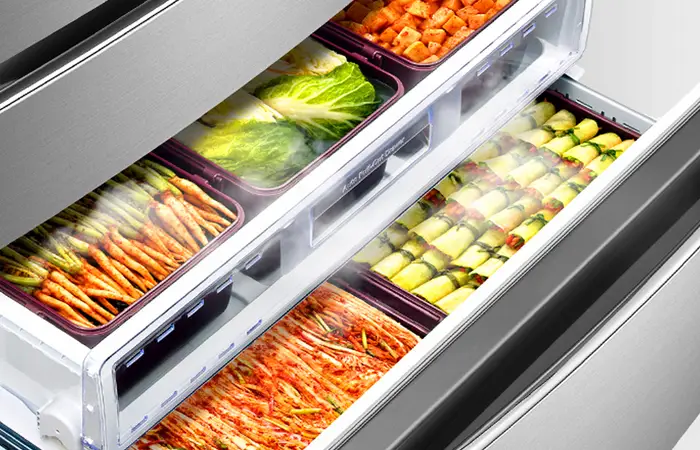In Korea, a household appliance unheard of and unproduced elsewhere globally has seamlessly integrated into daily life—the kimchi refrigerator. To those unfamiliar with Korean culture, the concept of a dedicated refrigerator for kimchi might appear peculiar. Nonetheless, these refrigerators, meticulously designed for optimal kimchi preservation, are not only manufactured but also widely adopted in Korea, gracing up to 98% of households. This sets them distinctly apart from conventional refrigeration units.
Distinguishing Features of Kimchi Refrigerators Compared to Conventional Refrigerators
Surprisingly, many Koreans themselves are not familiar with the differences between conventional refrigerators and kimchi refrigerators. While both appliances are designed to maintain low temperatures for storage, the disparities between the two are more substantial than one might initially assume.
Cooling Methods of Kimchi Refrigerators (Direct Cooling vs. Indirect Cooling)
The primary distinction between a kimchi refrigerator and a standard refrigerator lies in their cooling mechanisms. Kimchi refrigerators utilize direct cooling, while regular refrigerators employ indirect cooling.
In direct cooling, cold air is directly transmitted through cooling pipes on the walls. On the other hand, indirect cooling involves the use of a cooling fan to circulate cold air within the storage compartment.
In Korea, the traditional method of preparing kimchi in abundance during the fall to last through the winter involved storing it in clay jars buried in the ground. The direct cooling method in kimchi refrigerators resonates with this time-honored Korean approach to kimchi preservation.
Temperature Control Feature of Kimchi Refrigerators
The direct cooling method proves more advantageous for kimchi storage compared to the indirect cooling method, chiefly due to its superior temperature control feature. This functionality, known as the temperature control feature, ensures a consistently maintained temperature. In the realm of kimchi preservation, temperature fluctuations can prove detrimental, causing changes in taste and spoilage. The versatility of kimchi refrigerators is evident as many users also employ them for storing fruits, capitalizing on these benefits.
Kimchi refrigerators are meticulously designed to achieve a temperature deviation within 0.3 degrees, surpassing the precision of regular refrigerators. Achieving this target necessitates the installation of cooling units with over twice the power of those found in standard refrigerators, accompanied by more intricate circuitry and advanced functionalities. Consequently, kimchi refrigerators are generally priced higher than their regular counterparts of equivalent capacity.
A temperature lower than that of a regular refrigerator
The temperature in the refrigeration compartment of a standard refrigerator usually falls within the range of 2 to 5 degrees Celsius. However, for ideal kimchi storage, a temperature of approximately minus 1 degree Celsius is preferred. Despite the fact that kimchi would typically freeze at temperatures below freezing, its substantial salt content prevents freezing at around minus 1 degree Celsius. This temperature aligns with the traditional Korean practice of burying kimchi in the ground during winter, where the temperature naturally hovers around minus 1 degree Celsius.
The Types of Kimchi Refrigerators
Lid Type
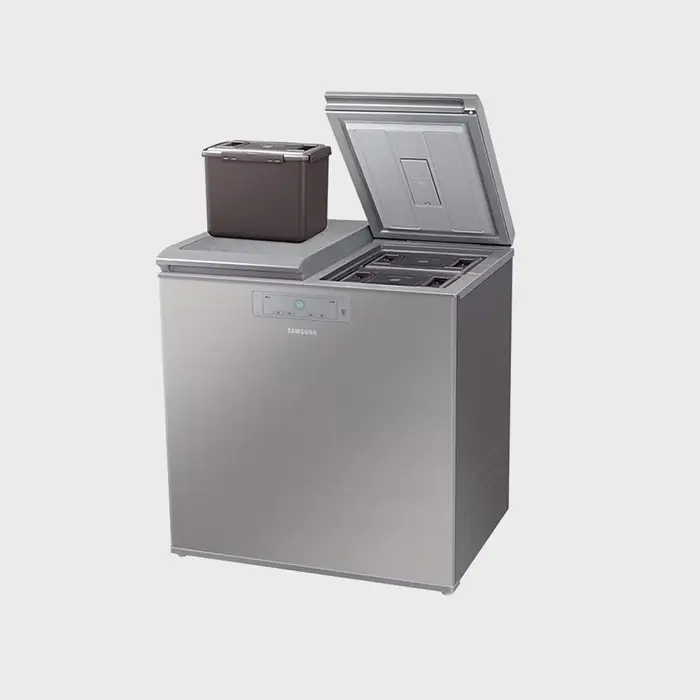
The lid type is the earliest design to be introduced and is well-suited to the direct cooling mechanism, which is the fundamental operation of kimchi refrigerators. However, it comes with some inconvenience, as seen in the photo, requiring users to open the lid and stack kimchi containers carefully for storage. As a result, it is commonly chosen for scenarios where kimchi retrieval is infrequent, for extended storage durations, or in commercial establishments. In terms of cost, it tends to be more budget-friendly than other configurations of kimchi refrigerators with comparable capacities.
Drawer Type
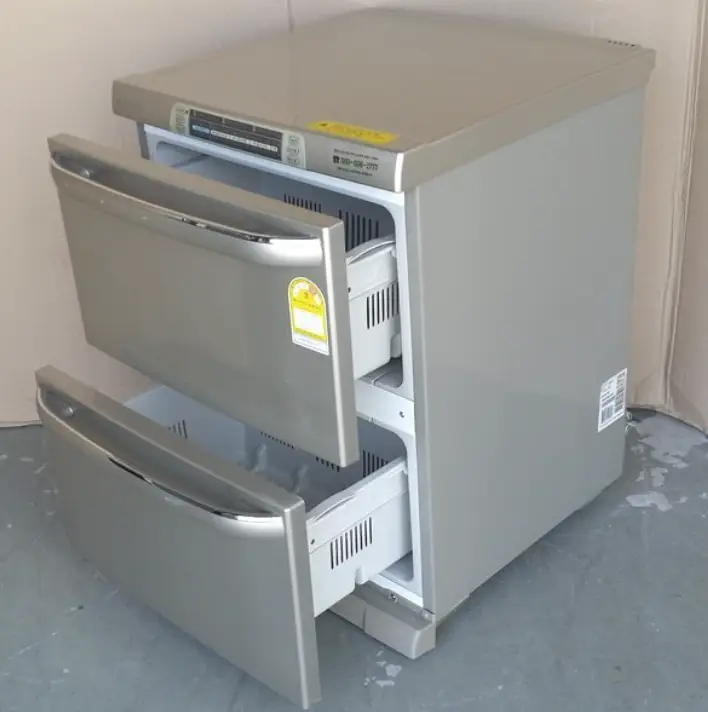
Developed as an improvement to address the inconveniences of the lid type, the drawer type offers enhanced usability. However, due to the intricate structure requiring multiple cooling units and compartments, it has a slightly reduced storage capacity compared to the lid type and comes with a higher price tag.
Combination Type
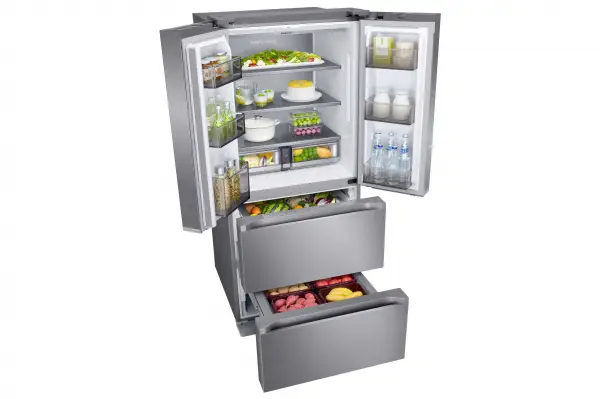
Widely utilized in large-capacity kimchi refrigerators, the combination type prioritizes user convenience and stands as the most prevalent design in the current market. The upper section, resembling a regular refrigerator, is compelled to adopt an indirect cooling method. To address the ensuing temperature fluctuations, each manufacturing company employs different methods for maximum compensation. This necessitates the incorporation of various advanced technologies, resulting in a higher cost compared to other types.
The Status of Kimchi Refrigerators
Kimchi refrigerators made their debut in the Korean market back in 1983, a significant period ago. However, their transformation into an indispensable household appliance for the general populace is a more recent development.
In Korea, in the planning stages of newly constructed apartments or houses, spaces are almost universally designated for essential appliances such as electric rice cookers, refrigerators, washing machines, induction (or gas stoves), and microwaves.
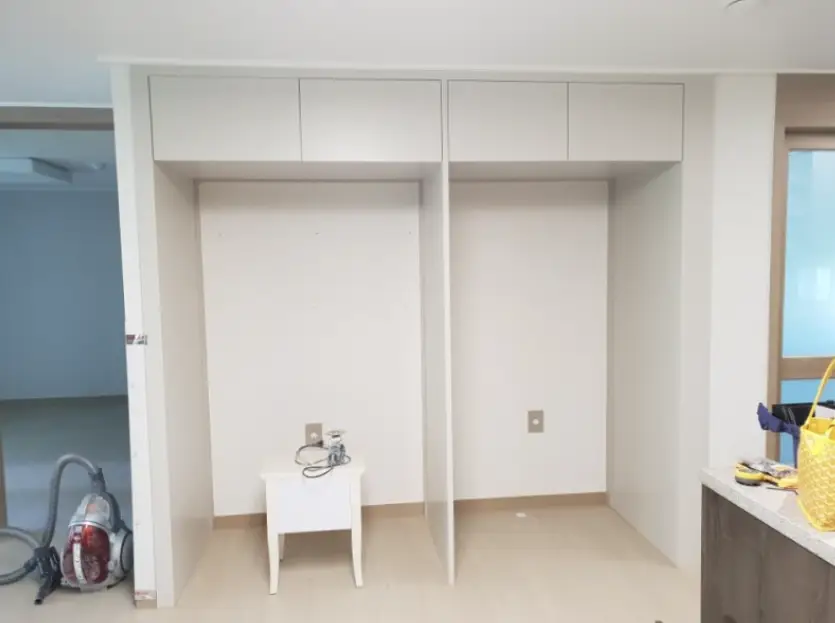
In recent times, the perception of kimchi refrigerators as indispensable household appliances has been gaining traction. Consequently, it has become a common practice in newly constructed apartments to allocate two spaces for refrigerators, as illustrated in the above image.
While the traditional practice of making and storing kimchi in large quantities during the fall has somewhat diminished, there is a growing trend of people opting to purchase smaller quantities of commercially available kimchi. Despite this shift, the sales of kimchi refrigerators have continued to surge. This is attributed to the recognition that the direct cooling method used in kimchi refrigerators excels not only in kimchi storage but also in preserving vegetables, fruits, meat, fish, and other items, outperforming conventional refrigerators.
What’s the latest with Korean soju? For more information, check out https://triviaaboutkorea.com/soju-chamisul-fresh-soju-alcohol/
